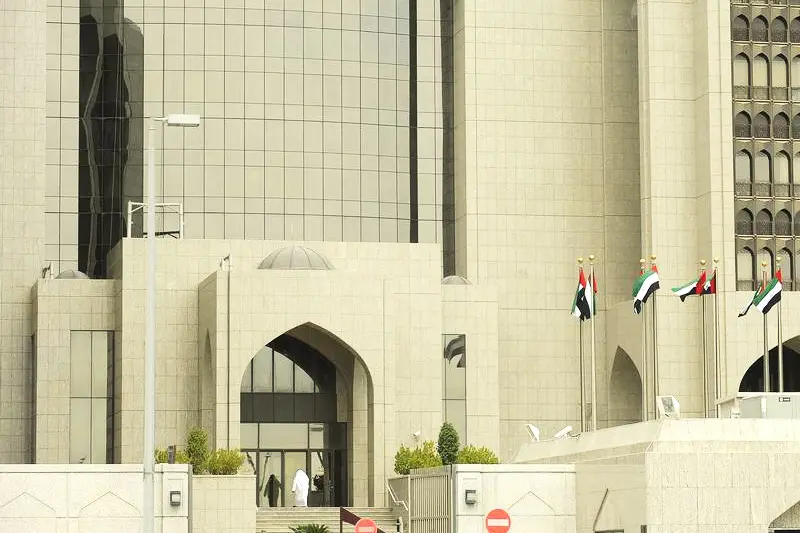PHOTO
Dubai - UAE banks are all set to achieve a minimum common equity Tier-1 capital (CET 1) ratio of 12 per cent and capital adequacy ratio (CAR) of 15.5 per cent by 2019, in line with new central bank regulations introduced in March this year.
The Tier-1 common capital ratio is a measurement of a banks core equity capital compared with its total risk-weighted assets (RWA) — making it a measure of a banks financial strength. It assesses strength and solvency in times of financial stress and excludes any preferred shares or non-controlling interests in its calculation.
The capital regulations announced by the UAE Central Bank earlier this year require banks to maintain a minimum CET 1 ratio of 7 per cent by 2017, with the counter-cyclical capital buffer (CCB) increasing each year until full implementation in 2019. After factoring in these buffers, the CET 1 ratio threshold increases to 8.25 per cent in 2017, 8.88 per cent in 2018 and 9.5 per cent in 2019.
Even though the central bank has not stipulated the countercyclical buffer, but a range, analysts use the top end in line with prudence and calculate the CET 1 minimum requirement at 9.5 per cent in 2017, 10.76 per cent in 2018 and 12 per cent in 2019.
Accordingly, the minimum CAR requirement stands at 11.75 per cent in 2017, 12.38 per cent in 2018 and 13 per cent in 2019. After factoring in countercyclical capital buffers, CAR could go up to 13 per cent in 2017, 14.26 per cent in 2018, and 15.50 per cent in 2019.
Under Basel-II, the Tier-I minimum threshold was 8 per cent while CAR was set at 12 per cent.
The capital rules imposed by the UAE Central Bank are stricter than the bare-bones Basel III framework, which requires a minimum CET-1 ratio of 9.5 per cent by 2019.
However, analysts said they expect the UAE Central Bank to follow the trend set by the other GCC countries.
In general, UAE banks meet the capital rules. Based on 2016 financials, almost all banks fully met the new rules even when factoring in the countercyclical buffer.
Analysts said UAE banks have utilised additional Tier-1 capital in abundance, well in excess of the optimal 1.5 per cent of RWA, while issuing too little Tier-1 capital.
This has made capital structures relatively inefficient, with additional Tier-1 coupons absorbing a high share of earnings and pressuring earnings per share.
According to the new regulations, based on the outcome of the supervisory review and evaluation process by the central bank, a bank may be subject to an additional capital add-on, also referred to as the individual supervisory capital guidance (SGC) requirement. The concerned banks must comply with the individual SCG requirement set by the central bank. This may affect Tier-2 banks, depending on risk profiles.
The Tier-1 common capital ratio is a measurement of a banks core equity capital compared with its total risk-weighted assets (RWA) — making it a measure of a banks financial strength. It assesses strength and solvency in times of financial stress and excludes any preferred shares or non-controlling interests in its calculation.
The capital regulations announced by the UAE Central Bank earlier this year require banks to maintain a minimum CET 1 ratio of 7 per cent by 2017, with the counter-cyclical capital buffer (CCB) increasing each year until full implementation in 2019. After factoring in these buffers, the CET 1 ratio threshold increases to 8.25 per cent in 2017, 8.88 per cent in 2018 and 9.5 per cent in 2019.
Even though the central bank has not stipulated the countercyclical buffer, but a range, analysts use the top end in line with prudence and calculate the CET 1 minimum requirement at 9.5 per cent in 2017, 10.76 per cent in 2018 and 12 per cent in 2019.
Accordingly, the minimum CAR requirement stands at 11.75 per cent in 2017, 12.38 per cent in 2018 and 13 per cent in 2019. After factoring in countercyclical capital buffers, CAR could go up to 13 per cent in 2017, 14.26 per cent in 2018, and 15.50 per cent in 2019.
Under Basel-II, the Tier-I minimum threshold was 8 per cent while CAR was set at 12 per cent.
The capital rules imposed by the UAE Central Bank are stricter than the bare-bones Basel III framework, which requires a minimum CET-1 ratio of 9.5 per cent by 2019.
However, analysts said they expect the UAE Central Bank to follow the trend set by the other GCC countries.
In general, UAE banks meet the capital rules. Based on 2016 financials, almost all banks fully met the new rules even when factoring in the countercyclical buffer.
Analysts said UAE banks have utilised additional Tier-1 capital in abundance, well in excess of the optimal 1.5 per cent of RWA, while issuing too little Tier-1 capital.
This has made capital structures relatively inefficient, with additional Tier-1 coupons absorbing a high share of earnings and pressuring earnings per share.
According to the new regulations, based on the outcome of the supervisory review and evaluation process by the central bank, a bank may be subject to an additional capital add-on, also referred to as the individual supervisory capital guidance (SGC) requirement. The concerned banks must comply with the individual SCG requirement set by the central bank. This may affect Tier-2 banks, depending on risk profiles.
Al Nisr Publishing LLC 2017. All rights reserved. Provided by SyndiGate Media Inc. (Syndigate.info).












